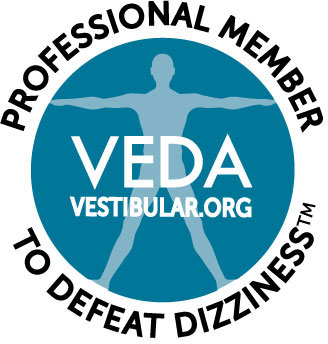As odd as it may seem, many people who are suffering from double vision have “learned to live with it,” without even realizing that they have this condition. While most people think of double vision in the literal sense – seeing twin images in your field of view – double vision isn’t always quite so obvious. Double vision often manifests in other forms, from headaches and dizziness to nausea and pain around the eyes. It also interferes with your vestibular system, which affects your balance. Some patients’ systems are so off, they feel like they can’t walk straight. If you feel fine sitting down, but become off-balance on standing, you may be exhibiting symptoms caused by the same underlying condition as double vision: binocular vision dysfunction, or BVD.

Double Vision and BVD
Double vision, or diplopia, often goes unnoticed by those who suffer from it because the brain won’t tolerate double images, and thus is very good at tricking the eyes into thinking that they’re seeing one image instead of two. In order to send a clear picture to the brain, your eyes have to be exactly aligned vertically. Any misalignment, known as binocular vision dysfunction, will cause your brain to force the tiny intraocular muscles in your eyes to correct the problem. This causes your eye muscles to do a lot of work, and after a while, they become tired and strained, which is when the symptoms of BVD start to become apparent. Along with double vision, these symptoms include:
-
Vertigo
-
Headaches
-
Dizziness
-
Nausea
-
Shoulder and neck pain
-
Concentration issues
-
Blurred vision
-
Balance problems
The symptoms of BVD can also be the result of other conditions unrelated to the visual system. Many people spend thousands of dollars on tests like MRIs and CT scans, only to be misdiagnosed as having a condition other than BVD. That’s why it’s so important to be tested for BVD if you have any of the previously mentioned symptoms, including double vision. Identifying the underlying cause of your double vision is important in determining how to treat it. Even if the condition can’t be reversed, double vision can be treated to help minimize its impact, often through the use of prismatic lenses.
Diagnosing Double Vision
When you start experiencing symptoms of double vision consistently, your quality of life will quickly be impacted. In order to combat these symptoms, it’s essential to be correctly diagnosed and treated by a neuro visual specialist. The doctors at the Neuro Visual Center of New York have years of experience in diagnosing and subsequently treating double vision and other conditions caused by misalignments of the eye. They also have the specialized equipment to perform an in-depth binocular vision exam to look for signs of BVD.
If you’ve been experiencing symptoms of double vision and feel you may have BVD, give the Neuro Visual Center of New York a call at (516) 224-4888 to schedule your first neurovisual exam. Let us help get your vision and your life back to normal.





